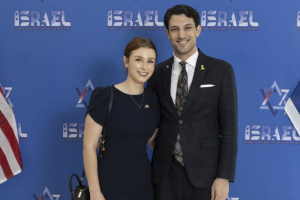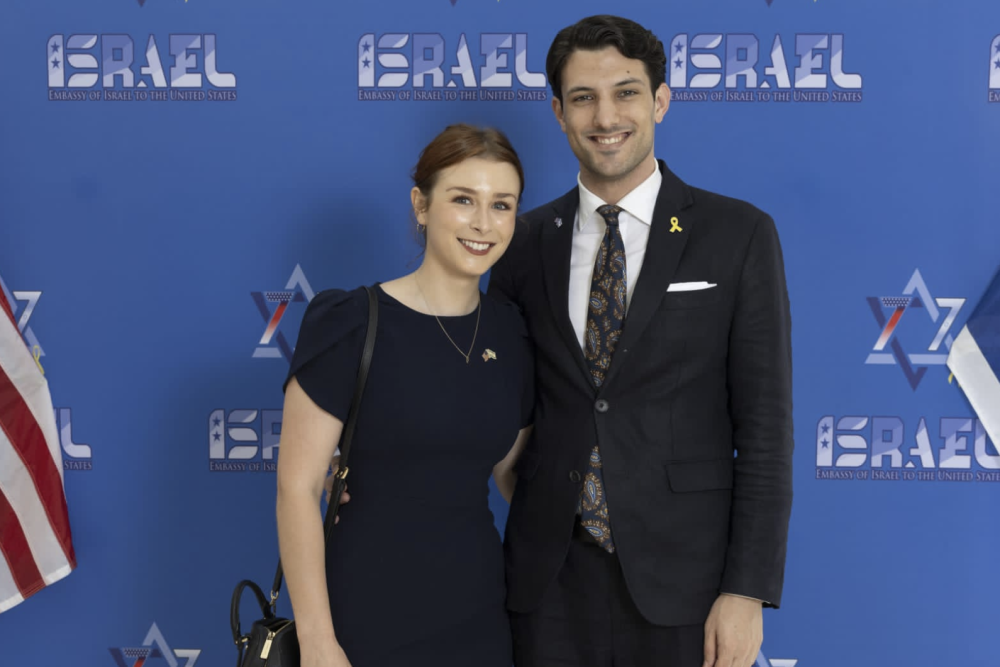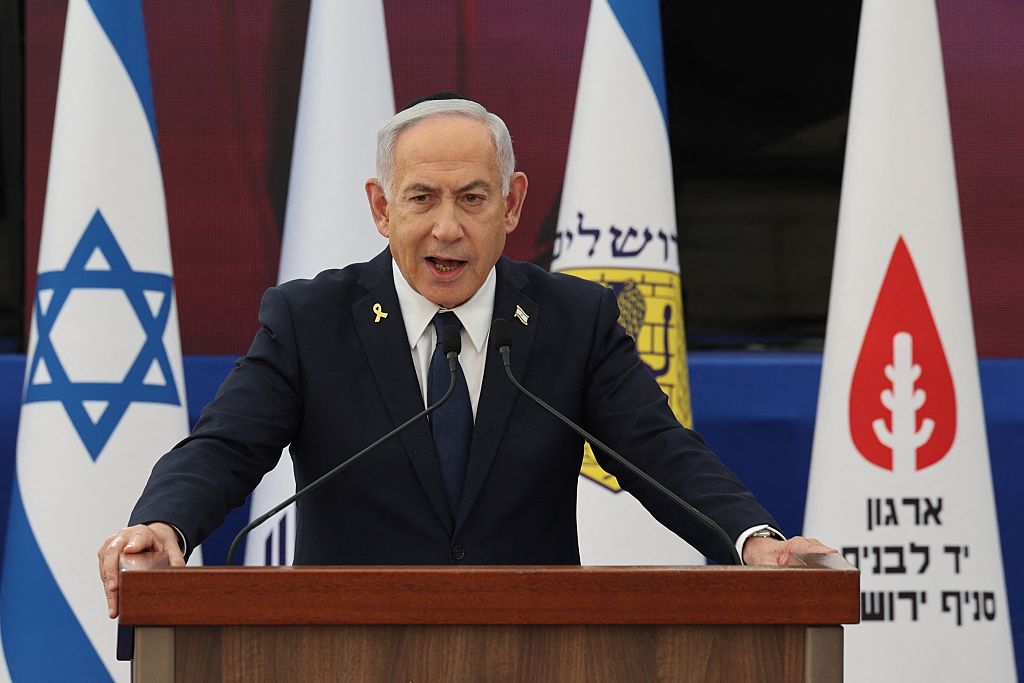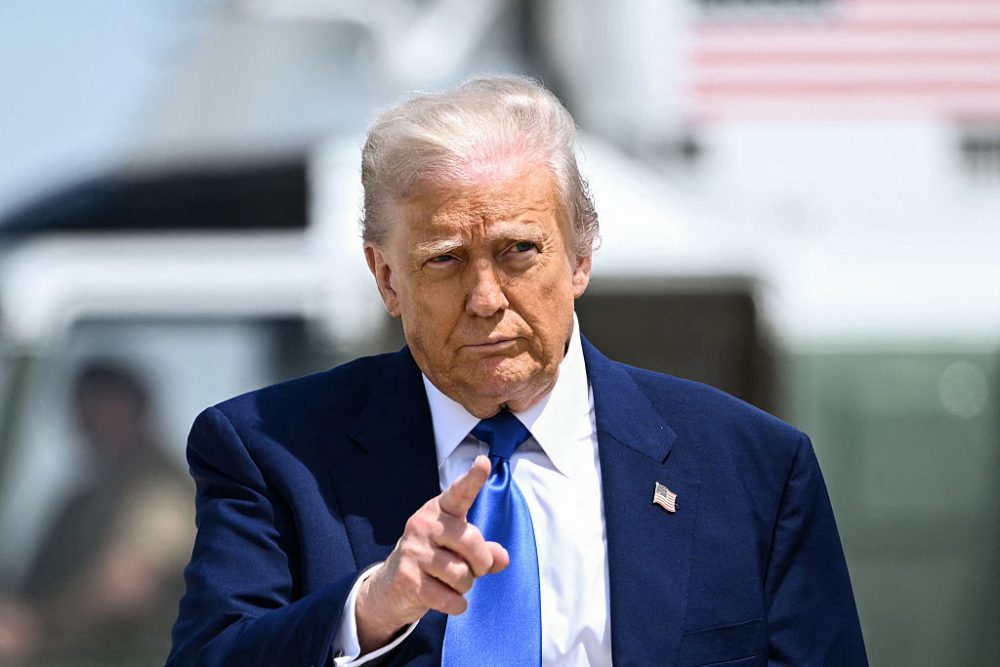The murder last night of two young Israeli embassy staffers, Yaron Lischinsky and Sarah Milgrim, on a street in Washington, DC was horrifying, but not surprising. The couple was gunned down outside the Capital Jewish Museum. A suspect then walked into the building, accepted water from those who thought he was a victim, and began chanting “Free Palestine.” He pulled a red keffiyeh from his pocket and invoked the old rallying cry: “There is only one solution. Intifada revolution.”
The man now in custody, Elias Rodriguez, was once associated with the Party for Socialism and Liberation, a hard-left political group whose slogans echo in anti-Israel demonstrations across the country. In the hours before the shooting, the group posted: “End the genocide. Israel out of Gaza now.” Rodriguez had marched in their protests and spoken at their rallies. After the shooting, they disowned him with haste, but the slogans remained. The worldview remained. The atmosphere remained.
This was not the act of a lone figure drifting through conspiracy. It was the collision of ideology and permission. Rodriguez did not invent the language that filled his mouth after the murders. It was given to him – polished in activist workshops, passed around on college campuses, reinforced by social media algorithms and institutional silence. That language gave him certainty. It gave him moral clarity. And then it likely gave him a target.
American antisemitism has changed. The old forms never disappeared, but something else has emerged beside them – something sharper, more socially acceptable, more dangerous for its capacity to hide in plain sight. What used to belong to the political fringes now thrives at the heart of self-declared “progressive” culture. The far left has absorbed the theological and conspiratorial architecture of Islamic antisemitism and fused it with a distinctly Western aesthetic: the language of equity, resistance, and liberation. It no longer marches under swastikas. It marches under PLO flags, wearing keffiyehs and holding aloft banners declaring human rights and signs soaked in blood-red metaphors of genocide and apartheid.
Whether knowingly or not, this ideology does not distinguish between Israelis and Jews, between diplomats and soldiers. It sees every Jew connected to Israel as part of a structure to be “dismantled.” Its fantasies are drawn in absolutes, its slogans lifted directly from the rhetoric of terror movements. In all the furious rhetoric, the old instincts are laid bare for all to see. New language, same old message – blame the Jew, dehumanize the Jew, remove the Jew.
Rodriguez’s path is not unfamiliar. He studied literature. He worked in nonprofits. He protested with Black Lives Matter in Chicago. He wrote about injustice and power and inequality. From the outside, he looked like many others shaped by America’s culture of activism. But at some point, the language he spoke turned sour. It began telling him that the world’s horrors trace back to a single enemy. That resistance meant confrontation. That confrontation meant violence. Too often this message has echoed on campuses, politely excused in the left wing media, and repeated so often it has infected the brains of a whole generation of angry young people.
So inspired by the Palestinian culture the left idolizes, the killer brought the cause’s most famous cultural contribution to the streets of the capital of the free world: terrorism and bloodshed. And to think, some people want to create a whole state based on this ideology, right next to the only Jewish one.
No one should be surprised that this logic has arrived at murder. The slogans repeated endlessly – “from the river to the sea,” “by any means necessary,” “global intifada”– are not metaphors. They are invitations. And for those inclined to listen closely, they are instructions. If you tell a generation that Israel is a colonial imposition, that Jews are white oppressors, that Gaza is Auschwitz and the IDF is the SS, do not pretend to be shocked when someone opens fire at a Jewish event in a US city.
The institutions that ought to be confronting this – universities, media, political parties – have too often made excuses for it. Jew-hatred, when dressed in anti-Zionist garb, is tolerated, platformed, even celebrated. The standards applied to other hatreds are quietly suspended. The same universities that launch full-scale investigations into pronoun disputes allow their lecture halls to echo with calls for Jewish extermination, so long as the speaker mentions the fantasy state of Palestine.
The Trump White House moved quickly to condemn the murders – and to its credit, has shown far greater clarity and resolve on antisemitism than its predecessor. But beyond the administration, too many powerful voices continue to enable the very atmosphere that made this shooting possible. Just days earlier, the United Nations amplified one of the most grotesque blood libels in recent memory, warning the world that 14,000 babies in Gaza were at imminent risk of dying from starvation within 48 hours. The figure was false, the timeline absurd, and the implication unmistakable: that Jews were mass murderers of infants. It was the kind of narrative that stirs primal hatred, and yet it was broadcast with the solemnity of moral concern. Even now, after two Jews were gunned down on the streets of Washington, the UN Secretary-General’s statement managed to condemn the murders as if they occurred in a vacuum, with no reference to the culture of demonization his own institution has helped promote. These are not minor missteps. They are the foundations of the worldview that brought Elias Rodriguez to a Jewish event with a gun. And unless they are dismantled, he will not be the last.
A young man had bought a ring and was planning to propose. A young woman was at his side. They walked out of a museum and were assassinated for being Israeli. Their deaths did not emerge from nowhere. They emerged from an ideological climate that is becoming more fevered, more violent, and more sanctioned.
There is still time to dismantle the structures that produce this violence. But only if we are honest about where they are, and who is building them. The line from campus chants to bullets outside a Jewish museum is not abstract, but direct. It will not be the last if it is not broken.
























Leave a Reply